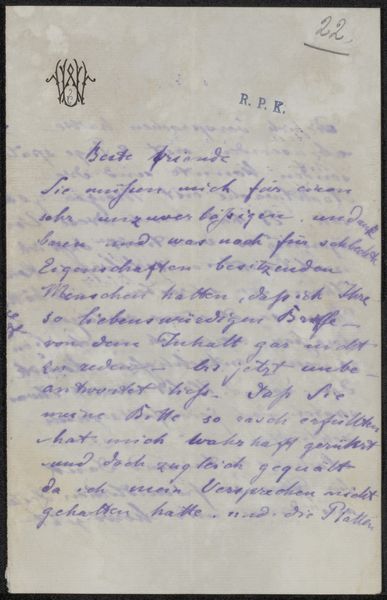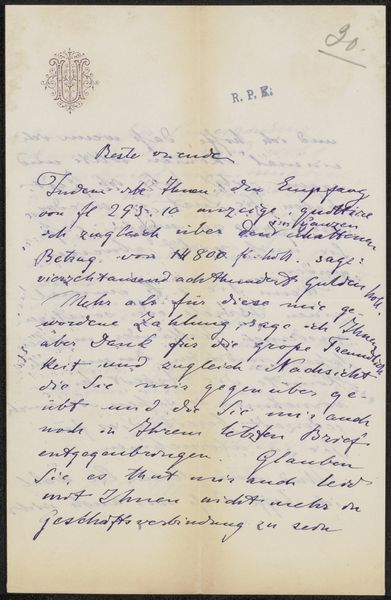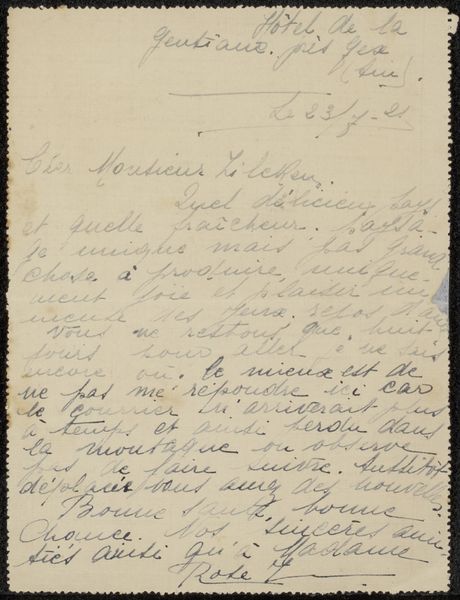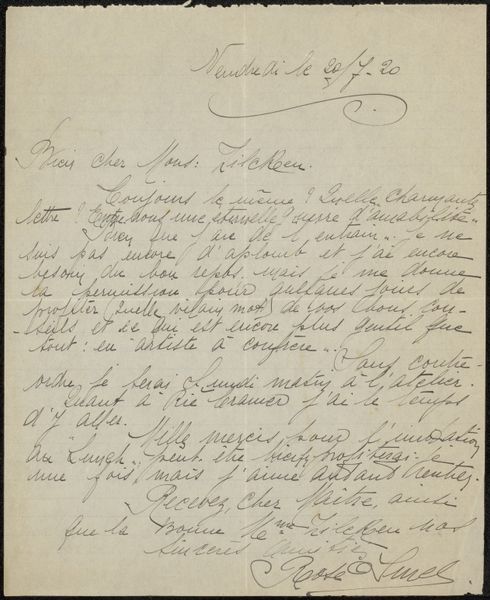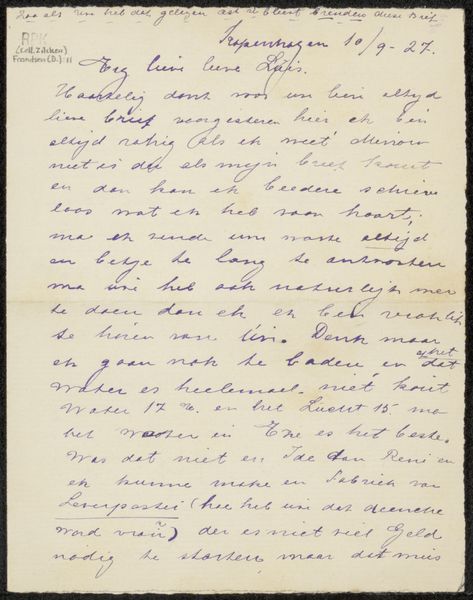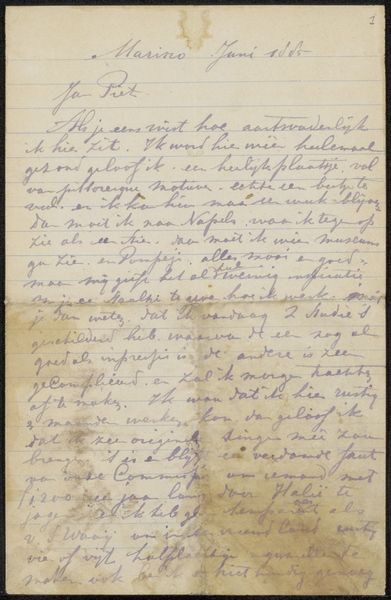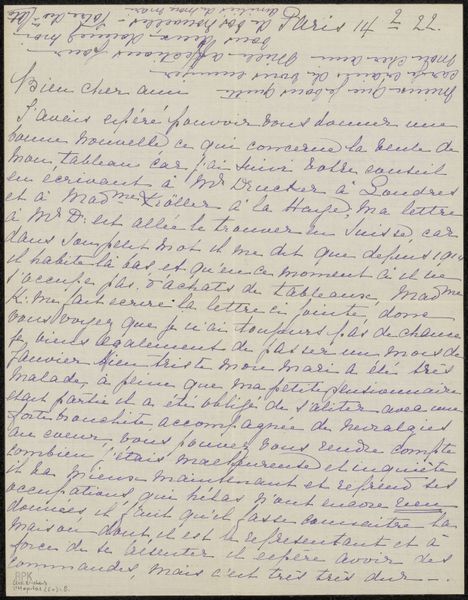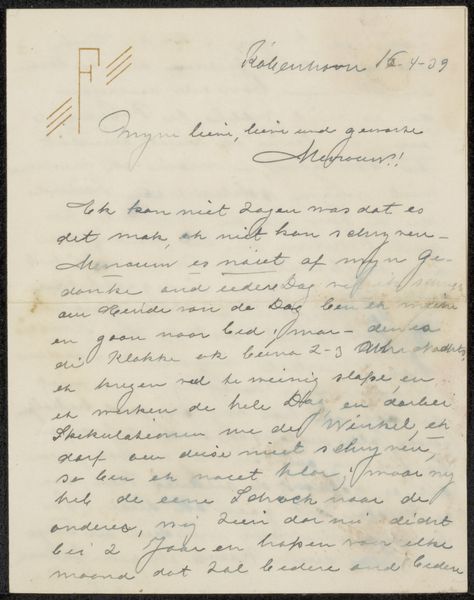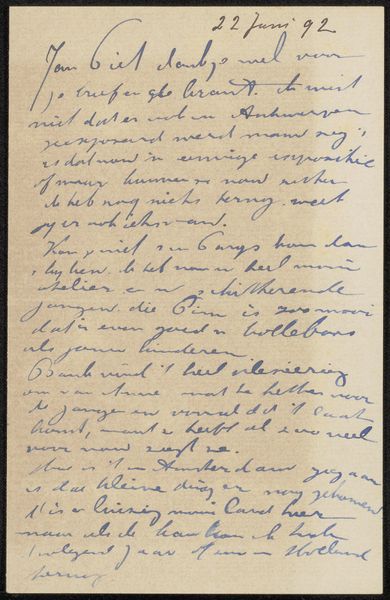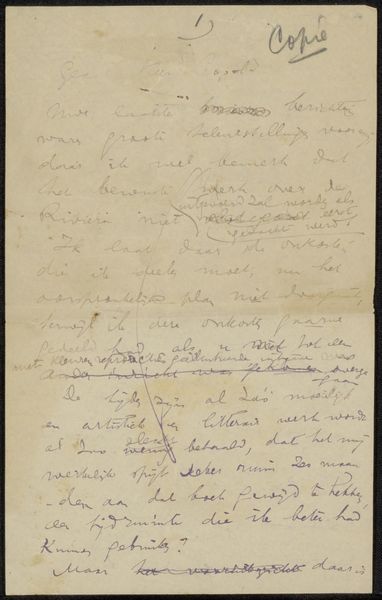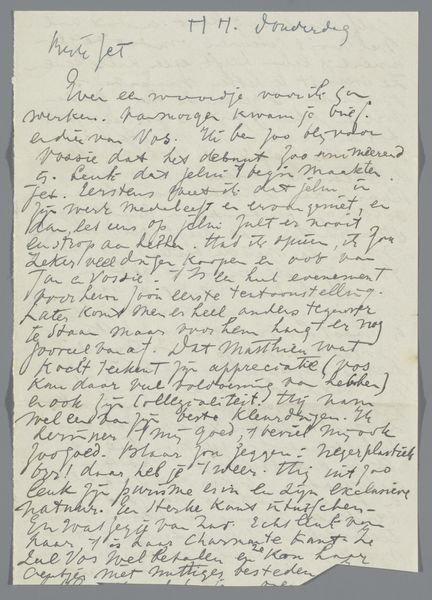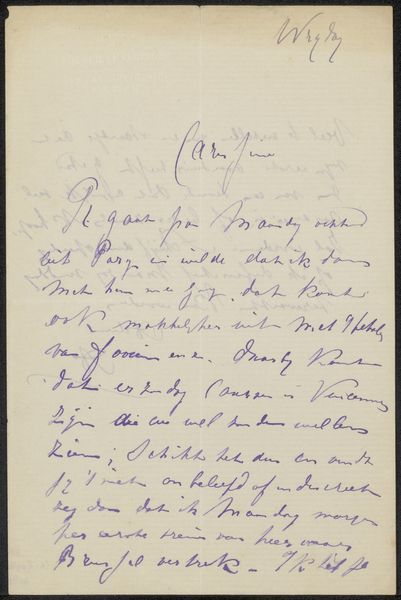
Copyright: Rijks Museum: Open Domain
Curator: Take a moment to observe "Brief aan Frans Buffa en Zonen," a pen and ink drawing on paper, potentially dating back to 1877. It currently resides in the Rijksmuseum's collection, attributed to William Unger. Editor: My first thought is of the intimacy here. The scale is personal; it feels like glimpsing a private correspondence. And the color… it's this almost ethereal blue that lends it an antique feeling, despite the crispness of the line work. Curator: Indeed, the intimate scale reinforces the concept of a personal document, meant only for the eyes of the sender and the recipient, heightening the importance of semiotics in interpreting the work. What do you make of the hand-lettering, its quirks, and idiosyncrasies? Editor: To me, it suggests an urgent or passionate sentiment; perhaps the letter contains news, or it could even express a complaint. Letters at the time served the social function of information dissemination but it's impossible for us to know without the words written in the paper. Curator: Looking closely, observe how Unger meticulously structures the composition around textual elements, dividing space almost rhythmically. How would you situate it historically and culturally, considering the art world's epistolary culture? Editor: During this period, correspondence served not just communication, but also a form of societal capital; a cultural practice shaped by class and societal expectations of maintaining public life and business interests. William Unger may well be situated in this culture in 19th century Netherlands. The inclusion of what looks like a family monogram on the top adds a specific, intimate dimension that situates this artifact historically. Curator: So it reflects a moment steeped in formal practices. From my perspective, that juxtaposition of formality and hand-wrought script provides an engaging dissonance. This speaks to the core of the artwork. Editor: Absolutely. It’s this convergence of societal conventions and singular expression, inviting our contemporary eyes into what feels both historical and strangely accessible. Curator: It's been a refreshing experience to look at "Brief aan Frans Buffa en Zonen" with you. The interplay of structure, expression, and historical echo makes it a powerful example of art's inherent complexity. Editor: I agree completely. Reflecting upon Unger’s creation has heightened my awareness of both the historical setting and private moments in art; and in the process the artifact itself has turned from something formal into something much more interesting.
Comments
No comments
Be the first to comment and join the conversation on the ultimate creative platform.
